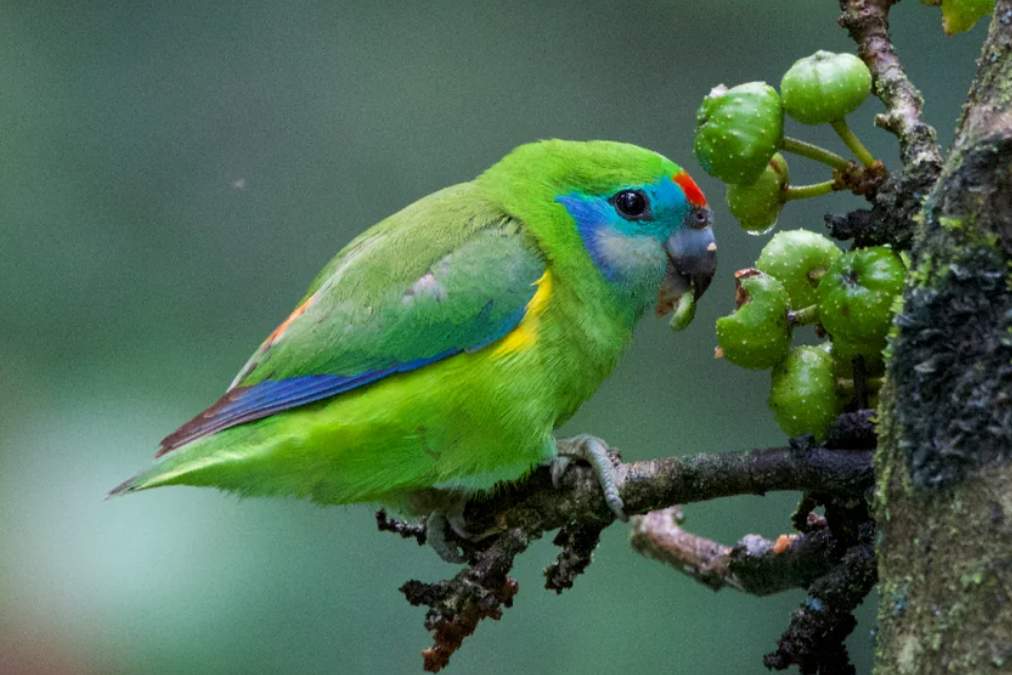Habitat: The tropical scrubwren (Sericornis beccarii) replaces the large-billed scrubwren (Sericornis magnirostra) in the rainforests and vine scrubs of the Cape York Peninsula and western New Guinea. It feeds and moves in the same lower-middle forest strata as the large-billed, although descending to the floor in the north.
It calls and sings in a nearly identical voice, is communal, nests in the same situations, and lays similarly marked eggs. Where the two ‘species’ meet around Cooktown and Helenvale, they seem to intergrade. In its plumage markings, the tropical scrubwren resembles the white-browed scrubwren more closely. But the evidence of intergradation with the large-billed scrubwren remains an affinity perhaps more subtly indicated by the red eye and plain tail of the tropical.
Identification: ADULTS: Northern Cape York Peninsula race: The upper parts are olive-brown. There is a broken white ring around the eye and a white stripe above the lores, edged dusky; the lores are black (male) or brown (female). Two white bars on dusky wing coverts The tail is plain brown. The underparts are plain cream-white. The eyes are red. The bill is grey flesh, and the mandible is pale flesh. The feet are pale flesh.
Southeastern Cape Kirk Peninsula race: The upper parts and face are mid-russet-brown. Obscure cream eye-ring and stripe above lores! Two faint cream bars on dull brown wing coverts The underparts are plain rufous-cream. The lores are russet in both sexes. The bill is dusky; the lower mandible is gray-flesh. The immature birds (as adults) of their respective races are duller.
Nesting and Breeding: Tropical Scrubwren nesting and breeding occur in October–December. Nest as a large-billed scrubwren, built into vegetation close to the ground or among plants sheltered in trunk buttresses.
Eggs: The bird lays 2 to 4 eggs; lustrous pale purple-brown, minutely speckled dark brown in zone at large end; oblong-oval, about 19 x 15 mm.
Family: The Sibley-Ahlquist taxonomy places the tropical scrubwren in the family Pardalotidae of the genus Sericornis, a classification that has been contested and is now acknowledged to be incorrect; in fact, they should be placed in the independent family Acanthizidae.
Distribution: Tropical scrubwren is found in coastal and hill rainforests and vine scrubs of Cape York Peninsula, west to Weipa, and southeast to Cooktown, Queensland. It is also found in Indonesia, Papua New Guinea, and the Aru Islands.
Vocalizations: The tropical scrubwren call is similar to the large-billed scrubwren.
Alternative Names: This bird is also known as Little Scrubwren and Beccari’s Scrubwren.
Size: The size of Tropical Scrubwren is about 110–115 mm in length.
Races: There are two races: one south to Iron Range and the other north to McIlwraith Range, intergrading between them.







